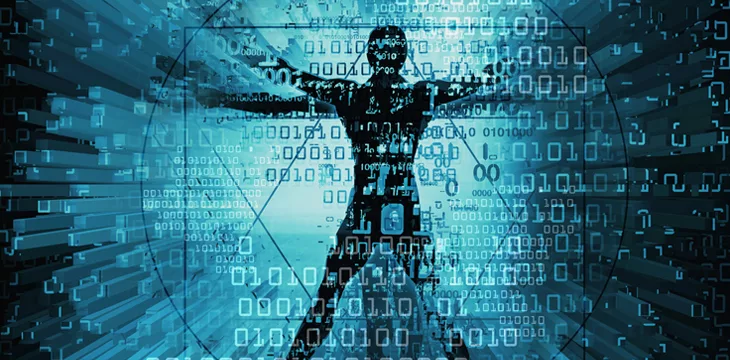|
Getting your Trinity Audio player ready...
|
This post originally appeared on ZeMing M. Gao’s website, and we republished with permission from the author. Read the full piece here.
It is ironic, but fatefully unsurprising:
Satoshi’s own identity case proves how important his invention is.
In COPA v. Wright, the U.K. High Court judge declared, before issuing a final written judgment, that Dr. Craig S. Wright is not Satoshi, the inventor of Bitcoin.
With no evidence of logical falsification to prove a negative presented in the trial, it is not easy to reach a straight conclusion that Wright is not Satoshi. One can infer that the judge must have been persuaded by the allegations of forgery. It proves that the COPA strategy has worked.
However, it is not surprising that the judge did not find Dr. Wright’s evidence strong enough to prove that he is Satoshi.
This is no ordinary case. Over a decade of anti-Wright campaigns and narratives have built an extraordinarily strong prima facie case against him. Accordingly, he needed to produce extraordinarily strong and indisputable evidence to prove it wrong. Proving Satoshi’s identity now is not the same as doing the same 15 years ago. The objective truth has remained the same, but the subjective conditions of receiving the truth have drastically changed. The one who lives in his own objective identity inevitably finds it hard to come out from his own sphere and fully anticipate and measure against the contradiction of the fallen (and stolen) world.
Dr. Wright was unable to overcome an adversarial environment to claim his rights, in court at least.
It is a cryptoverse. It has turned away from human reality, succumbed to imaginations of virtual possibilities, and hasn’t learned the Bayesian method to assess real-world
probabilities. Only a crypto antidote (e.g., a public cryptographic signature or a move of coins with a clear identity association) may satisfy its condition.
But even such a strong digital antidote will not be a cure; it will only treat a symptom manifested in a special case.
Humanity needs a timechain to preserve truth
The case proves one thing with all the drama and exclamations:
The world desperately needs a universal timechain (blockchain) with a distributed time-stamping server with globally recognized immutability to preserve digital truth.
In the past, the world relied on human testimonies. But our society is quickly becoming so corrupt and cynical that it can no longer trust human testimonies, even those under oath bearing a man’s conscience. This is not to condemn the courts because the courts are just readers of society’s changing conditions.
A provable and immutable global timechain is urgently needed, not to replace human conscience but to protect and preserve it.
Diagnosis of digital humanity
I wrote the book BIT & COIN: Merging Digitality and Physicality as a diagnosis and prescription for the prevention and cure of the growing digital cancer that threatens humanity.
Humanity is already submerged in the digitalization of information. This massive change brings many conveniences but also generates many significant problems, including:
(1) The management of digital information is increasingly under control by a strong aggregating force of the ‘centralized database gravitational field,’ leading to extreme centralization of information. As a result, information becomes an object of exploitation and manipulation by oligarchs. People are exploited and used without their knowledge, which is both sad and pitiful.
(2) The global economy has begun to gradually degenerate from a relatively free form of capitalism into a digital feudal system (typified by ‘digital landlords’ at the Valley) and may even further degenerate into an information slavery system.
(3) Although human cognition is becoming more and more closely connected with an increasingly large number of information sources, it is ironically becoming increasingly isolated from factual truth. This has progressed so badly that it starts to create confusion, challenges, and destruction in people’s understanding of the most basic truth and facts. If one day all information can be falsified, the consequence will be that, even if only a minority of information is actually falsified, people lose confidence in all information because they are forced to assume that nothing can be trusted. This is the outcome of digital cancer.
(4) The real blockchain technology is an epoch-making technology to solve these significant problems. Unfortunately, in the past decade or so, the world has suffered pervert developments in the disguise of a ‘courageous financial rebellion.’ The real blockchain technology has been overshadowed and replaced by a large-scale
cryptocurrency speculation campaign. This outright reversal brings almost entirely corruption: technological corruption, corruption of economic productivity, market corruption, political corruption, and corruption of public opinion and media.
The world needs a real solution
The world needs to know the truth.
But the world needs solutions even more a diagnosis. The book focuses on proposing technological, economic, business, and legal solutions. It extends a calling to all honest entrepreneurs, investors, developers, business people, economists, and other professionals to find real solutions and devote at least a part of your effort to making them a reality.
Although not meant to be an academic publication, the book is rather technical and dense in economics and legal concepts to prove the case for digital humanity. It may not be an easy read, but it will not be a waste of one’s time.
Meanwhile, the book aims to cast down the superstition and idolatry in the crypto circle, to persuade readers away from pure financial speculations, and to guide them towards ideas and development directions that have sound technological and economic foundations.
Reading this book may cause some readers displeasure or even antagonism. I plead for a more open-minded reading without regard to pre-existing vested interests. But I am willing to pay a price. For each informed reader, I reckon it is worth making myself unpopular with a few others.
Watch: Blockchain will spark industrial revolution 5.0, Dr. Eesa Bastaki says

 07-08-2025
07-08-2025 





